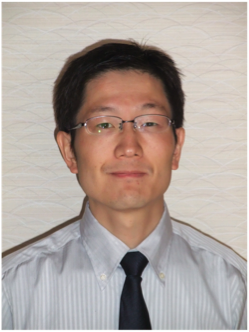
Prof. Hajime Hirao
City University of Hong Kong, China
Title: Computational Studies of Enzymes and Enzyme-like Inorganic Systems
Abstract:
We use computational chemistry techniques such ash quantum chemistry, multiscale QM/MM and QM/QM approaches, and many other advanced computational chemistry techniques to study biological (metallo)enzymes. Despite the complexity of biological systems, we show that computational chemistry is capable of providing valuable atomic-level insights into their chemical reactions. By applying computational chemistry techniques to other non-biological systems, we are also trying to understand the differences between biological and non-biological systems. In addition to applying computational chemistry to specific problems, we are developing efficient computational methods and algorithms, in the hope that our new computational methods will expand the capability of computational chemistry and thereby enable one to simulate the behavior of complex molecular systems with higher reliability and predictability in the future.
1. Ruixing Wang, Mikhail Ozhgibesov, and Hajime Hirao, "Partial Hessian Fitting for Determining Force Constant Parameters in Molecular Mechanics", J. Comput. Chem. 2016, 37, 2349-2359.
2. Hajime Hirao, Kai Xu, Pratanphorn Chuanprasit, Adhitya Mangal Putra Moeljadi, and Keiji Morokuma, "Key Concepts and Applications of ONIOM Methods" In Simulating Enzyme Reactivity: Computational Methods in Enzyme Catalysis, Iñaki Tuñón and Vicente Moliner, Eds. Royal Society of Chemistry, 2016, 245-293.
3. Kyung-Bin Cho, Hajime Hirao, Sason Shaik, and Wonwoo Nam, "To Rebound or Dissociate? This is the Mechanistic Question in C-H Hydroxylation by Heme and Nonheme Metal-oxo Complexes", Chem. Soc. Rev. 2016, 45, 1197-1210.
4. Kai Xu, Yong Wang, and Hajime Hirao, "Estrogen Formation via H-Abstraction from the O–H Bond of gem-Diol by Compound I in the Reaction of CYP19A1: Mechanistic Scenario Derived from Multiscale QM/MM Calculations", ACS Catal. 2015, 5, 4175-4179.
5. António J. M. Ribeiro, Lifeng Yang, Maria J. Ramos, Pedro A. Fernandes, Zhao-Xun Liang, and Hajime Hirao, "Insight into Biological Nitrile Reduction: A QM/MM Study of the Catalytic Mechanism of Nitrile Reductase", ACS Catal. 2015, 5, 3740-3751
6. Hajime Hirao, Wilson Kwok Hung Ng, Adhitya Mangala Putra Moeljadi, and Sareeya Bureekaew, "Multiscale Model for a Metal-Organic Framework: High-Spin Rebound Mechanism in the Reaction of the Oxoiron(IV) Species of Fe-MOF-74", ACS Catal. 2015, 5, 3287-3291.
7. Pratanphorn Chuanprasit, Shu Hui Goh, and Hajime Hirao, "Benzyne Formation in the Mechanism-Based Inactivation of Cytochrome P450 by 1-Aminobenzotriazole and N-Benzyl-1-Aminobenzotriazole: Computational Insights", ACS Catal. 2015, 5, 2952-2960.
Biography:
Dr. Hajime Hirao received his BEng and MEng degrees from Kyoto University and his PhD from The University of Tokyo. He underwent his postdoc training at The Hebrew University of Jerusalem, Emory University, and Kyoto University. Prior to that, he worked for three years on computer-assisted drug design at the Novartis institute in Japan. Before joining City University of Hong Kong, he worked as faculty at Nanyang Technological University in Singapore. Over the years, he has been interested in computational and theoretical aspects of chemistry, especially chemical reactions. One of the major goals of his research is to figure out how difficult chemical transformations can be achieved using simple catalytic platforms built from earth-abundant elements. Dr. Hirao’s research applies quantum chemistry, multiscale models, and many other computational chemistry techniques to a variety of complex molecular systems of practical importance such as transition-metal catalysts, metalloenzymes, drugs/drug targets, porous materials, and nanomaterials. Using computational approaches and often with experimental collaborators, his group seeks to derive key insights into chemical reaction mechanisms and bonding patterns of complex molecules, with the ultimate aim of designing new functional molecules and materials. He is also interested in developing new concepts and computational methods that may enhance our understanding of chemistry or improve the efficiency of computational analyses.